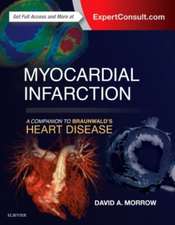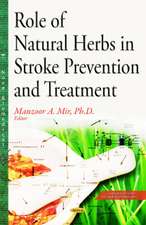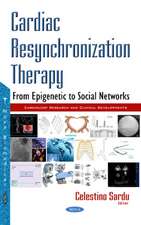Heart Failure Mechanisms and Management
Editat de Basil S. Lewis, Asher Kimchien Limba Engleză Paperback – 31 oct 2012
Preț: 380.25 lei
Preț vechi: 400.26 lei
-5% Nou
Puncte Express: 570
Preț estimativ în valută:
72.78€ • 79.09$ • 61.18£
72.78€ • 79.09$ • 61.18£
Carte tipărită la comandă
Livrare economică 21 aprilie-05 mai
Preluare comenzi: 021 569.72.76
Specificații
ISBN-13: 9783642635090
ISBN-10: 3642635091
Pagini: 508
Ilustrații: XXVIII, 474 p.
Dimensiuni: 155 x 235 x 27 mm
Greutate: 0.7 kg
Ediția:Softcover reprint of the original 1st ed. 1991
Editura: Springer Berlin, Heidelberg
Colecția Springer
Locul publicării:Berlin, Heidelberg, Germany
ISBN-10: 3642635091
Pagini: 508
Ilustrații: XXVIII, 474 p.
Dimensiuni: 155 x 235 x 27 mm
Greutate: 0.7 kg
Ediția:Softcover reprint of the original 1st ed. 1991
Editura: Springer Berlin, Heidelberg
Colecția Springer
Locul publicării:Berlin, Heidelberg, Germany
Public țintă
ResearchDescriere
Following remarkable advances in medical care. the past decade has witnessed a significant improvement in the survival of patients with many different forms of heart disease. In the majority ofcases. however. the advances have been pa lIiative and not curative. The resu It has been the prod uction of an ever-increasing population of patients with heart disease. many of whom suffer from myocardial dysfunction and latent or overt heart failure. Heart failure is now a major cause of morbidity and mortality in cardiac patients. This book aims to combine in a single volume data relating to both pathophysiological mechanisms and the clinical management of the patient with heart failure. It includes chapters dealing with molecular. biochemical. and pathophysiological aspects of heart failure. ven tricular function and its assessment. and the clinical aspects of heart failure in different cardiac disorders, including ischemic heart disease. valvular heart disease. and the cardiomyopathies. There are sections on pharmacotherapy. the role of arrhythmias, exercise physiology. and neurohumoral mechanisms. The book also deals with newer inter ventional techniques. newer surgical procedures and some current problems relating to cardiac assist devices and heart and heart-lungs transplantation.
Cuprins
Molecular and Biochemical Aspects.- Autonomic Receptor Function in Congestive Heart Failure.- Beta-Adrenoceptors in Heart Failure: A Mechanism or a cAMP Follower?.- Anti-?-Adrenoceptor Autoantibodies with ?-Adrenergic Agonistic Activity from Patients with Myocarditis and Dilated Cardiomyopathy.- Pathophysiological Aspects of Heart Failure.- Heart Failure: Etiological Models and Therapeutic Challenges.- Vascular Compliance in Heart Failure: A Contributor to Impedance, and the Response to Vasodilator Drugs.- Cardiac and Baroreflex Control of the Circulation in Heart Failure.- Ventricular Function in Heart Failure.- Matching of Ventricular Properties with Arterial Load Under Normal and Variably Depressed Cardiac States.- Targeting Evaluation and Treatment of Heart Failure by Pressure-Volume Relations.- Importance of the Pericardium in Relation to Normal and Abnormal Ventricular Diastolic Function.- Non-Invasive Imaging Techniques in the Assessment of Patients with Heart Failure.- Radionuclide Evaluation of Ventricular Performance in Congestive Heart Failure: An Overview.- New Method for the Assessment of Right Ventricular Systolic and Diastolic Function Using Digital Subtraction Right Ventriculography.- Heart Failure in Acute Ischemic Syndromes and Acute Myocardial Infarction.- Left Ventricular Systolic and Diastolic Function Immediately After Acute Coronary Artery Occlusion.- Can Thrombolysis Prevent Ischemic Heart Failure?.- Acute Right Ventricular Infarction: Pathogenesis of Low Systemic Output and Therapeutic Implications.- Rheumatic Heart Disease and Valvular Heart Disease.- Mechanisms and Management of Heart Failure in Active Rheumatic Carditis.- Morphometric Structure of the Failing Left Ventricular Myocardium in Aortic Valve Disease Before and After Valve Replacement.- Heart Failure in Patients with Valve Disease: The Timing of Valve Replacement.- Cardiomyopathies.- Cardiomyopathies: Morphological Aspects.- Morphological Correlates of Cardiac Failure in Patients with End-stage Cardiomyopathy.- Influence of Ventricular Structure and Function on the Management of Heart Failure in Cardiomyopathies.- Pharmacotherapy of Heart Failure.- Inotropic Drugs in the Management of Heart Failure.- Effects of Different Positive Inotropic Drugs in Congestive Heart Failure.- Pharmacological Properties and Mechanism of Action of Denopamine in Experimental Animals.- Long-Term Double-Blind Comparative Study of Ibopamine Versus Placebo in the Treatment of Chronic Congestive Heart Failure.- Angiotensin Converting Enzyme Inhibitors.- Neuroendocrine-Renal Relationships in Heart Failure: Effect of Captopril.- Nitrate Therapy.- The In Vitro Metabolism of Nitrovasodilators and Their Conversion into Vasoactive Species.- The Role of Nitrates in Congestive Heart Failure.- Isosorbide Dinitrate and Nitroglycerin Oral Spray in Heart Failure.- Improved Left Ventricular Geometry and Function by Prolonged Nitroglycerin Therapy after Acute Myocardial Infarction.- Hemodynamic Effects of Subchronic Therapy with 120 mg Isosorbide Dinitrate Slow-Release in Coronary Artery Disease and Left Heart Failure.- Calcium Antagonists.- Calcium Antagonists in the Management of Heart Failure.- A Critical Appraisal of the Role of Calcium Antagonists in the Management of Patients with Ischemic Heart Disease.- Central and Renal Hemodynamic Effects of Diltiazem in Chronic Heart Failure.- Nisoldipine: Vasodilatory Effects of a Second-Generation Dihydropyridine.- Acute Hemodynamic Effects of Nisoldipine in Patients with Coronary Artery Disease and Reduced Left Ventricular Function.- Acute and Chronic Effects of Nisoldipine in Patients with Chronic Heart Failure.- Cardiac Arrhythmias in Heart Failure.- Arrhythmogenic Effects of Inotropic Agents Acting via Cyclic AMP and the Calcium Channel.- Prevalence, Significance, and Control of Ventricular Arrhythmias in Patients with Heart Failure.- Exercise Physiology and Exercise Therapy in Heart Failure.- Exercise Testing and Training of Patients with Congestive Heart Failure and Left Ventricular Dysfunction.- Hemodynamic Response to Exercise in Patients with Congestive Heart Failure.- Substrate Utilization During Exercise in Chronic Cardiac Failure.- Neurohumoral Mechanisms.- Metabolic and Neurogenic Determinants of Blood Flow in Congestive Heart Failure.- Natriuretic Peptides from the Heart, Brain, and Kidney: Localization, Processing, Vasoactivity, and Proteolytic Degradation.- Newer Interventional Techniques.- Percutaneous Laser Angioplasty in the Treatment of Coronary and Peripheral Vascular Disease.- The Influence of Percutaneous Aortic Balloon Valvuloplasty on Heart Failure in Elderly Patients with Calcific Aortic Stenosis.- Newer Surgical Techniques in the Patient with Heart Failure.- Cardiomyoplasty: A New Approach to Surgical Treatment of Heart Failure.- Left Ventricular Aneurysmectomy and Ventriculoplasty: Early Angiographic Results and Long-Term Follow-Up.- Cardiac Assist Devices, Heart Transplantation.- Hemodynamic Effect of the Jarvik 7–70 Total Artificial Heart: The Minneapolis Heart Institute Experience.- Selection of Therapy for Patients with Advanced Heart Failure: Tailored Afterload Reduction or Cardiac Transplantation?.- Current Problems in Heart and Heart-Lung Transplantation for Heart Failure.- Transplant Coronary Disease.










